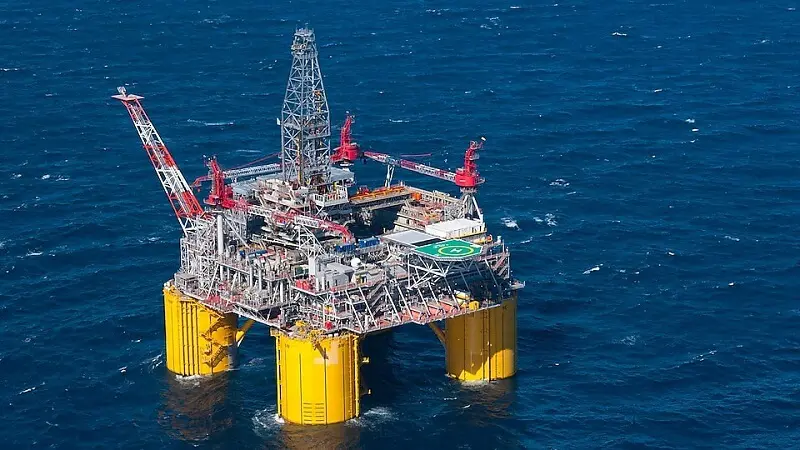How ODYSEA Discovered A Simpler Way
In 2013, Shell was searching for solutions to meet the high-temperature, high-pressure needs of the Appomattox field along with other opportunities in the Norphlet Trend within the Gulf of Mexico. The Bayou Companies (ODYSEA’S parent company) identified Proxxima1 as a technological breakthrough that could meet the demanding criteria for this offshore challenge. This brought about an intense effort combining some of the best materials scientists, subsea engineering teams, and offshore installers in the world. With that team in place, every piece of the process — material, application, equipment, and subsea installation method —was developed, tested, and validated.


Over 2,000 double-jointed pipes were coated at ODYSEA’S Gulf of Mexico facilities utilizing a consistent molding process. Ultimately, Hereema successfully completed the offshore campaign utilizing the Balder vessel and Appomattox hit first oil ahead of schedule in 2020.
This first-of-its-kind project taught us two key lessons:
- Proxxima is an ideal material for subsea applications use with the capability of replacing every other subsea performance material in the marketplace.
- Molding is an infinitely superior approach to coating due to the high reliability of the process. As each pipe is molded individually, it is inspected for the highest level of quality. Molding does not subject deepwater projects to the high variability and high risk of an extrusion-based, multi-layered process, which requires numerous industrial and chemical processes to work repeatedly and in-sync on the dozens of pipes in a single batch.
We incorporated these learnings into our philosophy at ODYSEA with the belief in A Simpler Way.
We’ve engineered A Simpler Way to coat and insulate pipes using the power of Proxxima™
Innovation
Necessity Drives Innovation
For decades, the subsea answer to inherent problems in existing insulation technology has been to make compromises, spend money to engineer around the challenges, or simply pray that pre-qualification testing goes well. ODYSEA felt that there was a better way, A Simpler Way, than continuing to increase complexity or bear additional risk. We have made a commitment to leverage a new material technology platform to solve our customers’ problems with complexity. That means continuous investment in innovative material and process development to produce more efficient and reliable thermal insulation and flow assurance solutions. Successfully executing Shell’s Appomattox project utilizing these methods, we become convinced that it was worth the time and resource commitment to apply our learnings and deliver a truly innovative approach to the biggest problems in this segment of subsea infrastructure. ODYSEA combines cutting-edge materials science, streamlined process engineering and a focus on operational efficiency to provide robust solutions so project teams globally can rest easier.

Innovation is in our DNA
The ODYSEA team is able to develop agile, flexible solutions to serve our customers and offer options that do not exist today including unmatched levels of speed and mobility to drive customer wins. We like to collaborate, understand the big picture and push your thinking by asking first principle questions so we can harness the power of our innovations to provide better, safer and less risky answers that deliver for clients.
Innovative Material Platform
ODYSEA has exclusively partnered with ExxonMobil to utilize Proxxima™ resins as single-layer insulation materials in our GDLXTM solution. Proxxima is a family of norbornene thermoset resins that utilize the Nobel prize-winning Grubbs Catalyst technology. These materials were destined for subsea service with benefits including inherently low k-values making them great insulators with no depth limitation. By nature of their molecular structure, they also have no chemical susceptibility to seawater and are extremely hydrophobic, resisting water uptake that can damage insulation properties.

Innovative Mobile-First Processing Platform
ODYSEA’S vision has always been to build an innovative company addressing key subsea infrastructure challenges around the world. To meet that vision, the hardware to support the process has always been designed with a “mobile-first” philosophy – skid-mounted pieces that can be easily assembled or disassembled and transported in standard, high-cube containers. Further, since GDLXTM only requires one thermal coating material that can be low-pressure molded onsite, clients have greater flexibility in scheduling. Fewer types of material and easily transportable equipment also open up new possibilities to serve remote locations in a safer, easier and more efficient manner.
Innovative Application
“The ODYSEA process is as simple as 1, 2, 3.”

FBE Pipe in Mold

Molding Process Underway

GDLX Pipe Complete
Sustainability
Less Waste by Design
Great design and process engineering strive to improve the effectiveness of solutions while eliminating waste. ODYSEA’S GDLXTM solution has been reviewed by third-party environmental consultants validating that the efforts to drive waste elimination have been successful and represent an over 50 percent reduction in CO2 equivalents relative to traditional methods of pipeline insulation. Primary reductions come from:
- Single, solid insulation layer removing need for all materials, waste and energy related to adhesives, extra layers of polypropylene and syntactic.
- A direct coating process that is 50 to 75 percent shorter in schedule and completed with a facility footprint that is around 85 percent smaller than that of GSPP / 5-Layer facilities. This significantly reduces the energy intensity of direct and indirect operations along with associated emissions from employees, inspectors, and others that participate in the project.
- Elimination of large batch-to-batch extruder purges, less risk of batch loss, and customized chamfers eliminating cutbacks reduce process waste.


On-site Operations Can Drive Over 70 Percent GHG Reductions
ODYSEA’S mobile coating allows for on-site operation or co-location with spoolbases, pipe mills, or offshore operations facilities. In addition to driving local content, this opportunity significantly reduces logistics pain points (costs, customs, weather) for customers and the safety hazards of hundreds of trucks on the road delivering insulated pipe. This approach can increase emissions savings to over 70 percent versus the incumbent solution!
